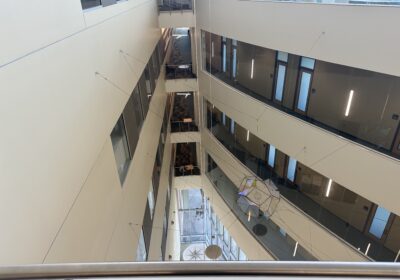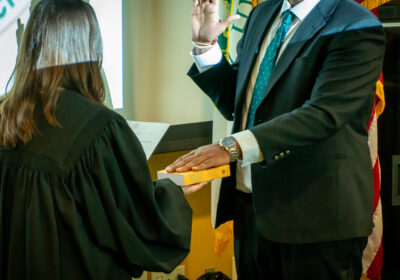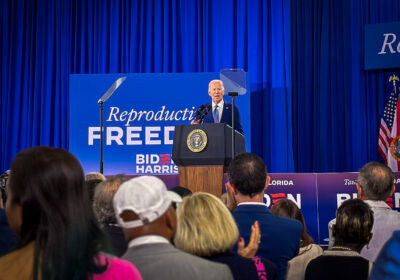USF’s Young Innovators prepare for prime time

Finalists in USF’s Young Innovator Competition prepared at the HSN studio in St. Pete this weekend before going to the final round of competition this Wednesday. ORACLE PHOTO/RUSSELL NAY
A few lucky student inventors in the seventh annual USF Young Innovator Competition may appear on an upcoming segment of “The Tonight Show,” starring Jimmy Fallon.
The competition was created to promote the innovative ideas of young inventors and is sponsored by USF, Tampa’s Museum of Science and Industry (MOSI) and the Home Shopping Network (HSN). The USF Young Innovator Competition is open to Tampa Bay area students in grades K-8, and 10 finalists currently remain in the competition.
While there are many science fairs and student invention competitions, founder and director Anton Hopen said this contest is different because it is a competition for innovators.
“We just don’t think that there’s a competition like it,” he said. “There isn’t any competition that celebrates entrepreneurship … you’re coming up with your own idea, but not stopping there. You continue to take it and see how far you can go with it, and we think that’s an exciting opportunity for children to learn about at an early age.”
Some of these 10 students met at HSN’s St. Petersburg television studios Saturday for a presentation workshop given by host Bill Green, and for a practice filming session on one of HSN’s live television sets.
Green’s workshop addressed what makes for an effective presentation, as well as what the finalists should expect when they present their ideas in front of a live audience and panel of six celebrity and science judges Wednesday during the last stage of the competition.
While on HSN’s television set, the students applied the coaching of Green and other workshop advisers and presented their innovations again, this time in front of a real HSN backdrop, in order to record television quality demo videos.
With the parents’ permission, these practice videos of the student presentations will be sent to “The Tonight Show” producers, who may select some of the finalists to appear in an upcoming “Fallonventions” segment on “The Tonight Show.”
This year, the USF Young Innovator Competition received 576 total submissions, according to Green.
Of the 10 finalists, Marc Taylor (fifth grade) devised a concept for a moveable speed bump at school zones that would withdraw into the street during non-school hours; Waishy Harmon (sixth grade) developed an idea for a hairbrush with water-spraying bristles, named the “Rush Brush,” and Lily Quay (third grade) thought of a bandage combined with the healing properties of ice.
Hopen, a 1991 USF honors graduate and patent attorney, said the contest is important because it not only encourages students to be creative and innovative at a young age, but also teaches them how to express why their inventions are so important.
“There are many great … inventors, and there are many great business people who can sell things, but it’s not always easy to get both at the same time,” he said. “The most successful people that we see are able to not only invent something, but convey the value of it.”
This is reflected in the guidelines that students will be judged on during the finals, as the judges will not focus simply on the invention itself. The finalists will also be judged on their creativity and persuasiveness, as well as the public benefit and marketability of each innovation. Students whose presentations and inventions are proficient in all of these areas will place higher at the end of the competition and will have additional opportunities outside the contest.
The student innovator who takes the grand prize of the competition will receive $1,000 in cash, and a matching $1,000 grant will be awarded to his or her school. Students who place second and third will be awarded $500 and $250, respectively, and their schools will also receive matching grants. All finalists will receive annual family passes to MOSI, regardless of place, and Hopen stated that HSN also has 10 secret prizes planned for the finalists.
Perhaps just as important, however, finalists can commercialize and patent their invention after the competition, as several students from past years have done.
“One (patented invention) is a collapsible shovel that military (personnel) and campers can roll up and take in a very small space,” Hopen said. “That inventor’s name is George Seits, and he is actually going to be there Wednesday for the final competition. We’re going to be awarding him a special plaque with his U.S. utility patent on it.”
The final live stage of the USF Young Innovator Competition will be held Wednesday at the Patel Center for Global Solutions from 5 to 8 p.m.






